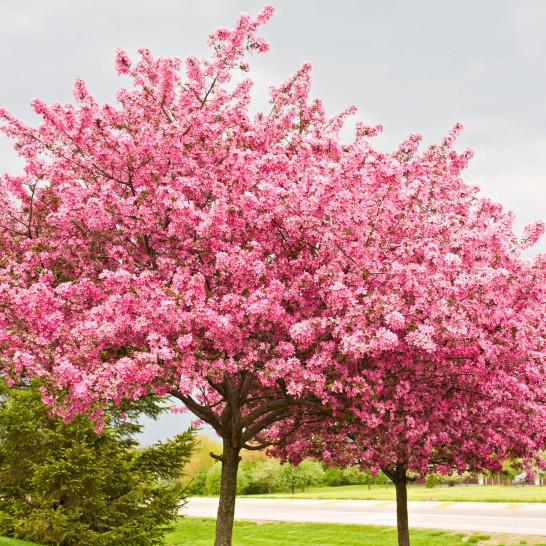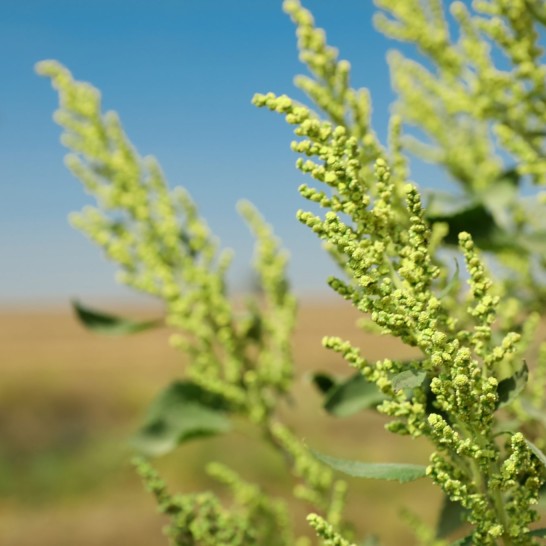Climate changes and rising carbon dioxide levels don’t just affect the environment. Experts say they also affect your nose. Warmer temperatures and higher carbon dioxide levels mean certain plants will thrive, and those are the plants that tend to make us sneeze during allergy season.
Allergies may seem like a minor nuisance, but according to the CDC there are an estimated 50 million Americans living with allergies, and $18 billion is spent every year dealing with the affliction.
From hay fever to sneezing to itchy, watery eyes, all of these symptoms could become heightened as plants begin to produce more virulent pollen. Allergies can also exacerbate asthma and slow down productivity, in addition to that overall miserable feeling.
Last week the National Oceanic and Atmospheric Administration found that carbon dioxide levels had reached a grim benchmark of 400 parts per million (ppm) in the atmosphere compared with about 280 ppm before the start of the industrial age.
Additionally, 2012 was the warmest year on record for the U.S., a full 3.2 degrees warmer than the average 20th century temperature, according to NOAA.
Dr. Jeffrey Demain , an allergist and director of the Allergy Asthma & Immunology Center of Alaska, said the new carbon levels concerned him as he’s seen his patients have more severe reactions from allergies. “I think over the last 20 years, in my opinion we’re seeing more patients with allergies,” said Demain. “And the allergies seem to be very significant.”
Attack of Potent Pollen
In the past 53 years, carbon dioxide levels have risen globally approximately 22 percent. Much has been written about how the rise in greenhouse gases is bad for the environment, but less has been said about how these gases can help some plants flourish. Unfortunately for humans these plants, like poison ivy and ragweed, tend to be irritating or even harmful to our health
A 2005 study found that when ragweed plants, a prime cause of hay fever symptoms in late summer and fall, were exposed to higher carbon dioxide levels they not only produced more pollen, but the grains of pollen were covered with increased numbers of nose-irritating proteins, supercharging the pollen’s allergic properties.
The study subjected ragweed plants in a lab setting to different carbon dioxide levels from three eras — the pre-industrial age, the present day and even the end of the 21st century. The study found that the allergen concentrations increased 20 percent from the preindustrial age to today. But they were projected to rise a startling 60 percent by the end of the century.
So the plants might be flourishing in 90 years, but anyone with a ragweed allergy will be miserable.
“They’re growing faster, they’re producing more flowers,” said Dr. Lewis Ziska, a research plant physiologist at the United States Department of Agriculture and one of the study’s authors. “It’s a two-edged sword … the [plants] that are responding have implications for public health.
Double Whammy Allergy Season
Traditionally, allergists break up the year into three distinct seasons. In spring it’s the trees that cause the most problems; summer brings flowering grasses that induce sneezing; and in fall ragweed pollen afflicts allergy sufferers with itchy, watery eyes.
But as temperatures more common for July start showing up in April and May in certain areas of the country, plants react to the weather and not the calendar date. Increased overlap between allergy seasons means more pollen in the air and little relief for people hoping for a break between seasons. “If you have high levels of pollen in the air then [people with pollen allergies] might have a lot of symptoms,” said Demain. “They’re a mess.”
However, even when there are multiple allergy seasons happening at once, allergists say there are things people can do to stave off the worst symptoms. To keep pollen out of the home, experts recommend washing your face and changing your clothes after you arrive home and using a neti pot daily to help flush out irritating pollen grains.
A Milder Winter Might Mean a Miserable Spring
When the weather is warmer and seasons are milder, some plants will be releasing allergy-inducing pollen for longer periods of time.
A 2011 study looked at the length of the ragweed seasons in cities along different latitudes from Georgetown, Texas, to Saskatoon, Canada, over a 14-year period. During that time, nearly all the cities experienced fewer days with frost and longer ragweed seasons.
Cities further north also had statistically larger increases to their ragweed allergy seasons. The population of Saskatoon had to contend with a ragweed season 27 days longer in 2009 than in 1995.
Marooned on an ‘Urban Heat Island’ Means More Sneezing
According to the U.S. Census Bureau, more than 80 percent of Americans currently reside in urban areas. While cities that lack greenery may seem like a safe place for people with pollen allergies, experts say they won’t offer much sanctuary during allergy season.
That is partly because cities often become what scientists call “urban heat islands,” where concrete and pavement soak up heat, resulting in consistently higher temperatures compared with surrounding rural areas. With warmer temperatures and higher levels of carbon dioxide, some allergen-inducing plants can produce more pollen than the same plants located in rural areas.
A 2003 study on allergen levels in Baltimore found more than three times the amount of ragweed pollen in the city compared with the surrounding rural areas.
Also, densely packed urban areas have higher levels of diesel and car exhaust, which can irritate the nose and throat, making allergy symptoms worse.
###
You may also be interested in . . .
Summer Allergies
What do you look forward to in the summer months? I bet it isn't summer allergies! Whether you are planning to be the grill master or the ultimate host of…
Botanical Sexism: Does it impact allergy sufferers?
What is Botanical Sexism? Tom Ogren, horticulturist and allergy researcher, has done extensive research on ways to reduce pollen counts and pollen…
Ragweed and Fall Pollen Allergies
Back to school season is here! Shorter days, crisp, cool evenings, and beautiful fall foliage are on the horizon. This time also marks the onset of weed…



